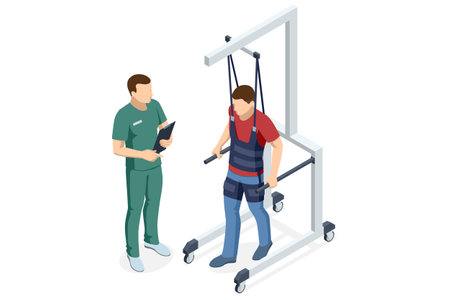Introduction to Pediatric Speech and Language Development
Understanding how children develop speech and language skills is essential for both parents and clinicians. In the United States, early identification of potential delays can make a significant difference in a child’s long-term communication abilities. This section provides an overview of the key stages in pediatric speech and language development, highlights why early detection is crucial, and explores how cultural and environmental factors influence children’s communication growth.
How Children Acquire Speech and Language Skills
Children learn to communicate through a combination of listening, observing, and interacting with those around them. From birth, babies are exposed to sounds, gestures, facial expressions, and words that help shape their understanding of language. The process typically follows a predictable pattern, but there is a wide range of what is considered normal development.
Typical Speech and Language Milestones
| Age | Speech & Language Milestones |
|---|---|
| 0-6 months | Coos, gurgles, responds to sounds, begins to use different cries for different needs |
| 6-12 months | Babbles (“ba-ba”, “da-da”), responds to name, understands simple words like “no” or “bye-bye” |
| 12-18 months | Says first words, imitates simple words and sounds, understands basic directions |
| 18-24 months | Uses 10-50 words, starts combining two words (“more juice”), points to familiar objects when named |
| 2-3 years | Uses 200+ words, speaks in short sentences (2-4 words), understood by family members most of the time |
| 3-4 years | Tells stories, answers simple questions, speech is clearer to strangers |
| 4-5 years | Says most sounds correctly, communicates easily with others outside the family, uses complex sentences |
The Importance of Early Identification
Catching speech or language delays early gives children the best chance for successful intervention. In the U.S., resources like Early Intervention programs and school-based services are available to support children who need extra help. Parents and caregivers play a critical role by noticing signs of delayed development and seeking guidance from pediatricians or speech-language pathologists.
Cultural and Environmental Factors in the United States
The way children acquire language can be influenced by their home environment, community culture, and exposure to multiple languages. For example:
- Bilingual households: It is common for children in multicultural families to learn more than one language. Bilingualism may slightly delay early speech milestones but does not cause long-term language problems.
- Family interaction: Regular talking, reading, and singing with children help build strong language skills.
- Community diversity: Exposure to different dialects or accents is part of daily life in many American communities and supports flexible communication skills.
Key Takeaways for Parents and Clinicians in the U.S.
- Speech and language development varies but follows general milestones.
- Early identification helps address issues before they impact learning or social skills.
- Cultural background and home environment play important roles in communication growth.
- If concerned about a child’s progress, reach out to a healthcare provider or speech-language pathologist for guidance.
2. Key Milestones: What to Expect at Different Ages
Understanding the typical speech and language milestones in children can help both parents and clinicians recognize when a child is on track or may need extra support. Here’s an easy-to-follow breakdown of what you can expect from infancy through early school years in both expressive (what your child says) and receptive (what your child understands) language skills.
Speech and Language Milestones by Age
| Age | Expressive Language (Speaking) | Receptive Language (Understanding) |
|---|---|---|
| 0-6 months | Coos, gurgles, makes pleasure sounds; begins to babble | Turns head toward sounds; recognizes parent’s voice; responds to music or soothing tones |
| 6-12 months | Babbles with more variety (“ba-ba,” “da-da”); uses gestures like waving “bye-bye” | Understands “no”; responds to simple requests; looks at familiar objects/people when named |
| 12-18 months | Says first words (“mama,” “dada”); imitates words and sounds; uses 5–10 words regularly | Points to objects/pictures when named; follows simple directions (“come here”) |
| 18-24 months | Uses 20–50 words; combines two words (“more juice”); names common objects | Understands simple questions; points to body parts when asked; listens to short stories/songs |
| 2-3 years | Puts together 2–3 word sentences (“I want cookie”); vocabulary expands rapidly (200+ words by age 3) | Follows two-step instructions (“Pick up your shoes and put them away”); understands differences in meaning (“big/little”) |
| 3-4 years | Tells simple stories; speaks clearly enough for strangers to understand most of the time; uses pronouns correctly (“he,” “she,” “they”) | Understands questions like “who,” “what,” “where”; listens to longer stories without losing attention |
| 4-5 years | Says most sounds correctly; talks about daily activities using full sentences; enjoys rhyming words and silly language games | Follows multi-step directions; understands time concepts like “yesterday,” “today,” “tomorrow” |
| 5-6 years (Kindergarten/1st Grade) | Tells detailed stories and asks questions; uses future tense (“I will go”); speaks fluently with peers and adults | Understands most classroom directions; comprehends longer explanations and conversations; recognizes humor or jokes in language |
What If My Child Misses a Milestone?
If you notice that your child is not reaching these milestones as expected, don’t panic—children develop at their own pace. However, it’s always a good idea to reach out to your pediatrician or a speech-language pathologist if you have concerns. Early support can make a big difference in helping your child communicate confidently.
Key Points for Parents and Clinicians:
- Every child is unique. Some kids talk earlier, while others take more time—but steady progress is important.
- Create a language-rich environment. Talk, read, sing, and play with your child every day.
- If in doubt, seek help. Early intervention can provide valuable support if delays are suspected.
This guide helps you know what to look for as your child grows so you can celebrate their successes and get them any help they might need along the way.

3. Recognizing the Signs of Delay or Disorder
Understanding Red Flags in Speech and Language Development
Every child develops at their own pace, but there are common signs that may indicate a speech or language delay or disorder. Being able to spot these red flags early is important for parents, caregivers, and clinicians. Here’s a simple overview of what to watch for at different ages:
| Age | Red Flags in Communication |
|---|---|
| 12 months | No babbling, gestures like pointing or waving, or response to their name. |
| 18 months | Not saying single words like “mama” or “dada,” trouble following simple directions. |
| 2 years | Using fewer than 50 words, not combining two words (“more juice”), difficult to understand even for family members. |
| 3 years | Unclear speech most of the time, not using sentences, trouble playing or talking with other children. |
| 4 years+ | Not telling stories, limited vocabulary, struggles to answer simple questions. |
Differentiating Between a Delay and a Disorder
It can be tough to know if a child is just developing at their own speed (a delay) or if they might have a more significant issue (a disorder). Here are some tips to help you tell the difference:
- Speech or Language Delay: The child is following the typical path but at a slower rate. For example, they eventually reach milestones, just later than peers.
- Speech or Language Disorder: The child’s development does not follow the usual sequence; their communication skills seem very different from others their age. They may struggle with understanding language (receptive), expressing themselves (expressive), or making sounds (articulation).
Common Signs of a Disorder vs. Delay
| Delay | Disorder | |
|---|---|---|
| Milestone Progression | Lags behind but follows typical sequence | Atypical pattern of development; skips steps or regresses |
| Response to Support/Intervention | Makes progress with help and practice | Lack of progress despite support; persistent difficulties |
| Error Patterns | Makes common mistakes for age group (e.g., says “wabbit” for “rabbit”) | Makes unusual errors (e.g., omitting first sounds, difficulty with many sounds) |
When to Seek Further Evaluation
If you notice any red flags or feel concerned about your child’s speech and language development, it’s always okay to ask for help. Early intervention can make a big difference. Here are some situations where reaching out to a pediatrician or speech-language pathologist (SLP) is recommended:
- Your child is not meeting multiple milestones listed above.
- You notice regression—your child loses previously acquired skills.
- Your gut tells you something isn’t right, even if others say “wait and see.” Trust your instincts.
- Your child gets frustrated often when trying to communicate or avoids talking altogether.
- Your family has a history of speech/language disorders or learning differences.
- You’re unsure if your child’s error patterns are typical for their age.
How Clinicians Can Support Parents and Caregivers
Pediatricians and SLPs play an important role in guiding families. They can provide screenings, answer questions about what’s typical versus concerning, and recommend next steps based on each childs unique needs. Remember: reaching out for an evaluation doesn’t mean there’s definitely a problem—it simply helps ensure every child gets the support they need to thrive.
4. Supporting Speech and Language Development at Home
Everyday Strategies for American Families
Encouraging your childs speech and language development doesnt require special equipment or expensive programs. Many effective strategies can be woven into daily routines and activities common to families across the United States. Here are some practical, culturally relevant ideas you can try at home:
1. Make Mealtime Conversation a Habit
Use breakfast, lunch, or dinner as an opportunity to talk. Ask open-ended questions like, “What was the best part of your day?” or “What do you think we should make for dinner tomorrow?” This helps your child practice expressing thoughts, telling stories, and using new vocabulary.
2. Read Together Every Day
Reading is a cornerstone of language growth. Choose books that reflect your family’s culture, interests, and traditions—whether it’s classic American tales, multicultural stories, or books about local events. Point to pictures, name objects, and encourage your child to predict what happens next in the story.
Book Ideas by Age Group
| Age Group | Recommended Book Types |
|---|---|
| Toddlers (1-3) | Board books with simple pictures and repetitive phrases (“Brown Bear, Brown Bear, What Do You See?”) |
| Preschoolers (3-5) | Rhyming stories, interactive books (“Chicka Chicka Boom Boom”) |
| School-Aged Children (6+) | Early reader series, folk tales from different cultures (“Magic Tree House,” “American Tall Tales”) |
3. Use Everyday Errands as Learning Opportunities
Trips to the grocery store or post office are great chances to teach new words. Name foods as you shop, count items together, or ask your child to help find things on your list. These real-world experiences help build vocabulary relevant to American life.
4. Sing Songs and Play Word Games
Singing familiar songs like “The Wheels on the Bus” or playing word games such as “I Spy” fosters listening skills and memory. Rhyme games and tongue twisters are fun ways to play with sounds and syllables.
5. Celebrate Cultural Traditions Through Language
Participate in American holidays like Thanksgiving, Fourth of July, or Black History Month by discussing their meanings, reading related stories, and engaging in crafts or community events. These moments provide rich opportunities for conversation and cultural learning.
Culturally Relevant Activities Table
| Activity | Description | Language Skills Practiced |
|---|---|---|
| Baking Cookies Together | Follow a recipe and talk through each step. | Sequencing, following directions, vocabulary building |
| Pledge of Allegiance Practice | Recite together; discuss its meaning. | Memorization, comprehension, expressive language |
| Neighborhood Walk & Chat | Name things you see: cars, animals, signs. | Naming objects, asking/answering questions |
| Cultural Storytelling Night | Share family stories or read folktales from diverse backgrounds. | Narrative skills, listening comprehension |
Tips for Encouraging Speech at Home
- Avoid correcting mistakes harshly; instead, model the correct way gently.
- Praise efforts to communicate—even if words aren’t perfect yet.
- Create a quiet space without TV or loud music during focused conversations.
- If you speak more than one language at home, use both comfortably—bilingualism is beneficial!
- Stay involved with your childs teachers or therapists for consistent support strategies.
Your everyday interactions are powerful tools for nurturing communication skills. By making language a natural part of your familys routines and celebrations, youre giving your child a strong foundation for lifelong learning.
5. Working with Clinicians: Assessment, Intervention, and Resources
Navigating the Evaluation Process
When parents or caregivers have concerns about a childs speech or language development, working with qualified clinicians is key. In the United States, speech-language pathologists (SLPs) are the primary professionals who assess and treat communication disorders. The evaluation process often starts with a referral from a pediatrician or early childhood educator.
What to Expect During an Assessment
| Step | Description |
|---|---|
| Initial Consultation | The clinician gathers background information, medical history, and details about your child’s communication skills. |
| Standardized Testing | Your child may participate in play-based or formal tests to assess speech, language, and social communication abilities. |
| Observation & Interview | SLPs observe your child in different settings (if possible) and may interview family members or teachers for additional insight. |
| Feedback Session | The clinician shares results, explains strengths and areas of need, and discusses next steps with you. |
Understanding Therapy Options
If an assessment shows that your child would benefit from intervention, several therapy options are available. The most common is individual or group therapy provided by an SLP. Therapy sessions are personalized based on your child’s unique needs and goals. Some families may also explore teletherapy services or home-based programs.
Types of Speech and Language Interventions
| Type of Therapy | Description |
|---|---|
| Individual Therapy | One-on-one sessions focused on specific goals for your child. |
| Group Therapy | Small groups work together to build social communication skills. |
| Teletherapy | Online sessions via secure video platforms, convenient for families with busy schedules or limited local access. |
| Home Programs | Parents receive guidance and activities to practice at home, often as a supplement to direct therapy. |
Accessing Helpful Resources in Your Community and Nationally
Navigating available resources can feel overwhelming, but many organizations exist to support families and children. Here are some places to start:
Community-Based Resources
- Local School Districts: Many public schools offer free screenings and services for eligible children through Early Intervention (for ages 0-3) and Special Education (ages 3+).
- Pediatricians’ Offices: Doctors can provide referrals and guidance about local services.
- Parks & Recreation Centers: Look for inclusive playgroups or parent support gatherings.
- Libraries: Storytime events can encourage language development in a social setting.
National Organizations and Online Resources
- American Speech-Language-Hearing Association (ASHA): Offers information about milestones, finding certified SLPs, and advocacy resources.
- CDC’s “Learn the Signs. Act Early.” Program: Provides free milestone checklists and tips for early action.
- Parent Center Hub: Connects families to support networks across the U.S., including those focused on disabilities and developmental delays.
- Autism Speaks: A resource for families seeking information about autism spectrum disorder and related speech/language support.
If you have concerns about your childs communication skills, reaching out early makes a difference. With supportive clinicians, tailored interventions, and community resources, every family can find a path forward that fits their needs.


